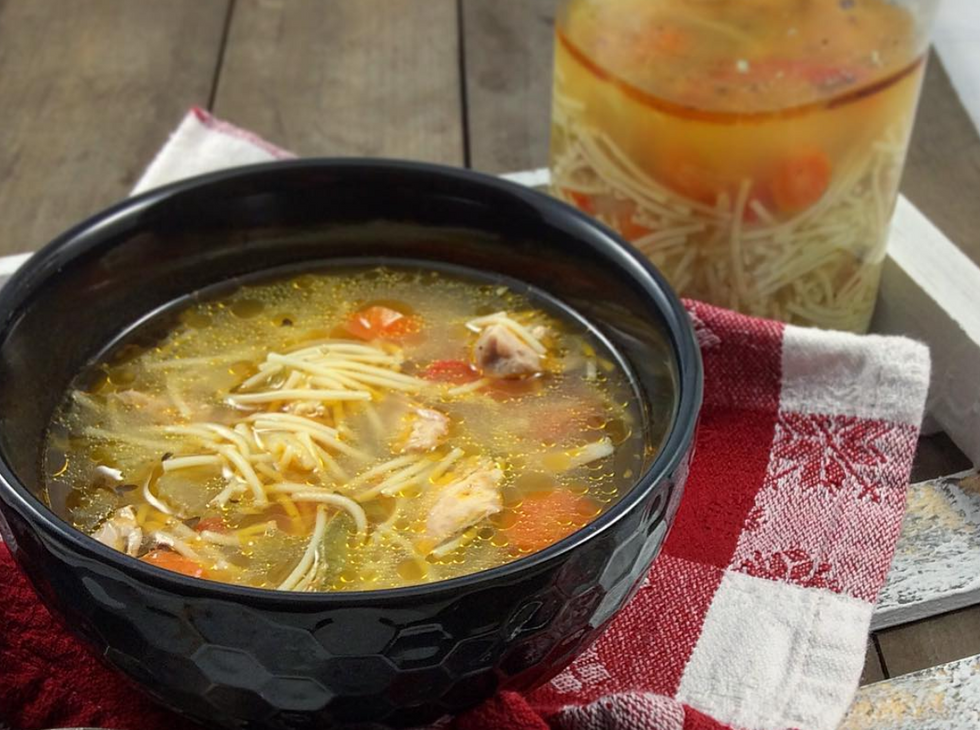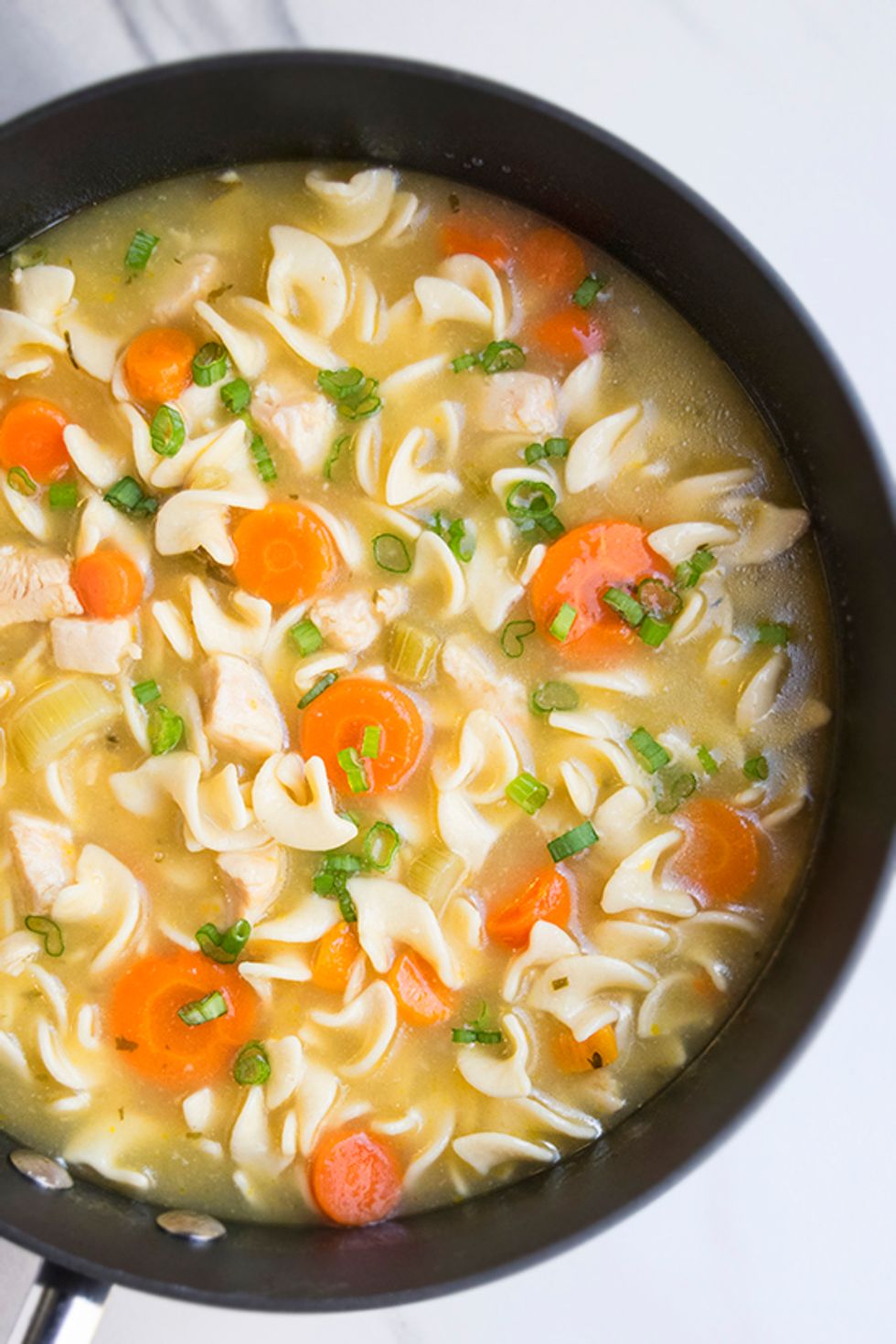Synthesis of Chicken Noodle Soup
Difficulty Level: College student
Theoretical Yield: 5-6 soup bowls, at 8 oz each.
Disclaimer: Not all biochemistry students are like this. I happen to be one of the peculiar ones.
Additional Tips: You only have to read the methodology section closely if you're trying to reproduce this recipe. Do so at your own risk.
Abstract (Thoughts)
A week ago, my boyfriend (or, as I like to call him behind his back, blond force of nature- BFON) got sick. The following internal dialogue ensued.
Oh no!! Maybe I can finish up lab work early so I can check on him.
As usual, that didn’t happen. Thus, I procrastinated his illness until two days later (in my mind, this is how life works), when I finally had time to go see him.
Introduction
I rushed out of lab to head to the grocery store, where I consulted my brain for the best cold-fighting ingredients I could find. While browsing the aisles, I recalled a paper I had read a long time ago about how chicken noodle soup can alleviate colds, by inhibiting the migration of pro-inflammatory white blood cells.
Materials
Vitamin A, vitamin A, vitamin A. I grabbed a nice pack of carrots off the produce section and threw them into a cart. Good for regulating immune response.
Tomatoes and tomato paste, for lycopene. I mean, research on lycopene is inconclusive, but more antioxidant compounds couldn't possibly hurt, could they?
Cabbage and a lime, for the vitamin C. May shorten the duration of his illness.
Pasta, good carbon source for energy.
Canned chicken broth, because I’m lazy.
Canned peas, good source of vegetable protein for antibody production.
Methodology
Wheezing, saddled down with a bulging backpack and my reusable cloth bag full of groceries, I burst into BFON’s apartment and tornado-ed into his kitchen while he looked on bemusedly.
All procedures used in this synthesis were modified from procedures previously published. In a medium-sized pot, I combined 16 oz of chicken broth with 16 oz of filtered water (fH2O), for about 1 L of solvent. After the solvent was brought to a boil, three fistfuls of fusilli pasta was added to the pot. Two tomatoes, a quarter of cabbage, and three carrots were finely chopped and quantitatively transferred to the reaction vessel. Upon addition of the tomato paste, I noted a deep red color change. The canned peas were rinsed with two 25-mL portions of cold fH2O, and then added to the solution. Half of a lime was squeezed in. I stirred occasionally with dual wooden stirring rods (chopsticks). After the contents of the pot were brought back to a boil, the pot was removed from the heat source and allowed to cool until the foaming produced by the boiling subsided. A big bowl of this mildly anti-inflammatory chicken noodle soup was placed in front of BFON.
Results/Discussion
The soup looked like this, only devoid of the chunks of chicken, chives, and it was two times less appealing. But it looked like this:
The actual yield of this synthesis was 4 bowls/6 bowls x 100 = 66.67%, a relatively low number. Possible sources of this experimental error may have been evaporation of some of the water due to excess boiling, along with absorption of solvent by the pasta and the vegetables. Furthermore, three Julianne-sized fistfuls is an insufficient amount of pasta. Future directions to improve this synthesis include using two instead of one can of chicken broth, along with increasing the amount of pasta.
BFON made a full recovery two days later. Although he attributed his recovery to the fact that I appeared while he was already beginning to show signs of improvement, I fully credit the mildly anti-inflammatory effects of my chicken noodle soup. At the very least, I believe in the power of placebo. In essence, though the % yield was rather low, the synthesis was successful. Chicken noodle soup and all its variants- including vegetarian noodle soup- can never go wrong, when one is ill.

















